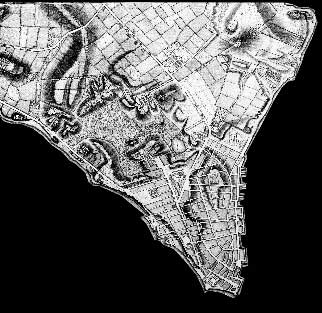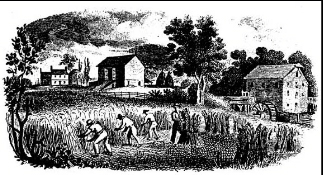



From the establishment of the Dutch colony of New Amsterdam in 1625 through the early nineteenth century, the population of Manhattan remained concentrated on the southern part of the island. By 1653, New Amsterdam had expanded to what is today Wall Street, where a wood barricade was constructed from the Hudson to the East Rivers. North of the wall were farms.
The area of Manhattan in which Baruch College is located was once part of a large tract of land belonging to Peter Stuyvasant, who served as Governor-General of the New Amsterdam colony from 1647 until 1664. Stuyvasant had a farm, called a bouwerie in Dutch, in the area presently bounded by East 5th and 14th Streets. A tract of forested land owned by Stuyvasant stretched up to present day East 30th Street. After the British seized New Amsterdam in 1664 and renamed the colony New York, Stuyvasant retired to his bouwerie. He lived at the estate house that stood on what is today Stuyvasant Street, just west of Second Avenue, until his death in 1672. In the 1740s, Stuyvasant's heirs put part of his holdings up for sale. This included much of Manhattan from present East 21st to 30th Streets. A newspaper advertisement described the property as being:
Two Miles out of Town, very commodious for a Gentleman's Country-Seat or Farmer, containing One-hundred and Thirty-one Acres; to which